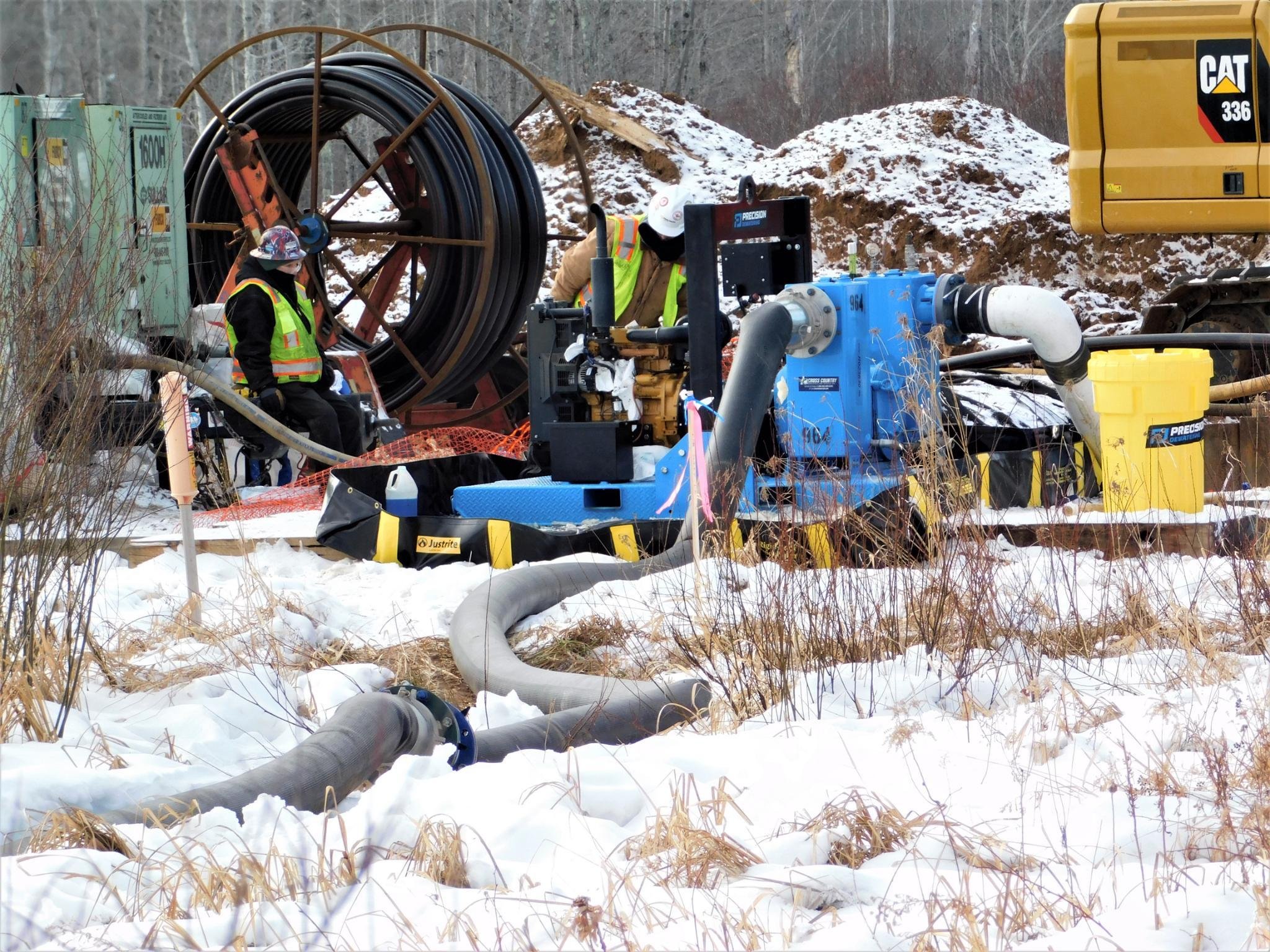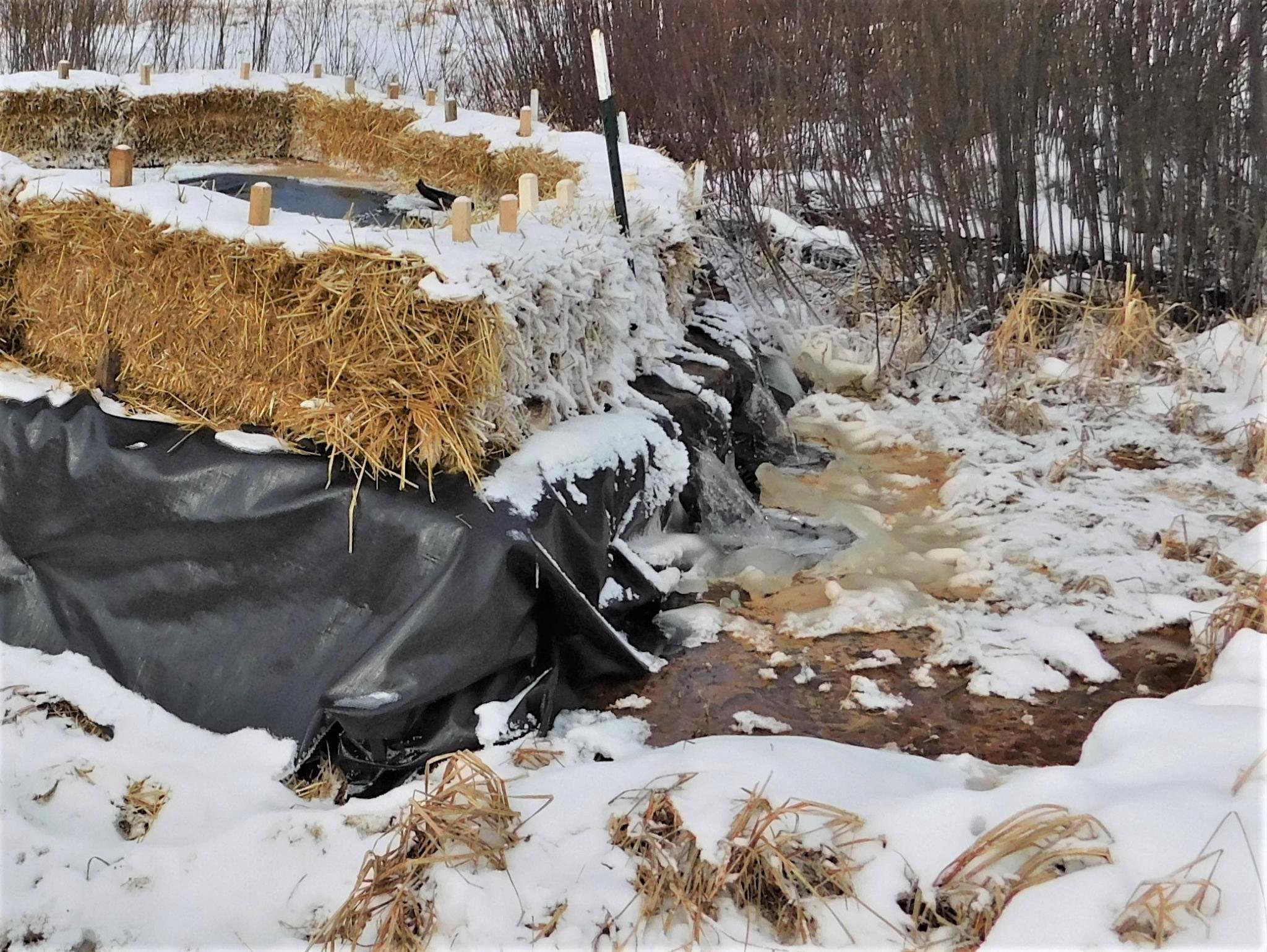Dewatering & Aquifer Drawdown
Enbridge built Line 3/93 across a 300+ mile long swath of Minnesota dominated by wet soils and wetlands. Because they are so wet, these soils are not amenable to pipeline construction. In order to dig the pipeline trench and install the pipeline, Enbridge had to continuously "dewater" the trench. In other words, they had to constantly pump water out of the trench to prevent the trench from filling with water as they built the pipeline.
The dewatering required to install a pipeline into wetlands created quite a conundrum for Enbridge, despite 2021 being a year of exceptional drought. In some places along the Line 3/93 corridor dewatering stations were installed yet never used. Yet the amount of water Enbridge needed for construction purposes too quickly exceeded their allowed permits. On January 26, 2021, just 5 days after they burst the aquifer at Clearbrook (but before state agencies knew that was happening because they didn’t report it properly), Enbridge applied for a 10-fold increase for their allowed dewatering. Yes, less than a week after the first aquifer breach during early construction, Enbridge asked for what may be a record-level permit increase. In hindsight, many wondered how the “most studied pipeline project in history”, as it was billed by Enbridge enthusiasts, could have calculated so inaccurately, especially considering the drought would only help minimize a need for dewatering.
Witnesses observed Enbridge trucks sucking water from local streams and even wild rice lakes during construction. While local farmers struggled to keep cattle and crops watered, Enbridge water trucks regularly sprayed road crossings to clear them of mud, even on rainy days.
While the impacts of dewatering done by Enbridge to accommodate its pipeline installation may never be fully understood, it was clear the state gave too little regard to public concerns. In fact, Minnesota DNR approved the ten-fold increase without proper consultation of the Tribes or the public. This extreme change from 500 Million to 5 Billion gallons of allowed dewatering brought shock to those of us following the process. This DNR approval, during a time of drought, seemed dismissive of concerns from those living near the project work, including calls from Indigenous relatives for consultation regarding this permit expansion.
Water usage concerns, post installation, have turned to deeper worries regarding the ways Enbridge chose to “fix” the hydrology concerns created by their lack of due diligence in permitting and their rushed construction during the Covid-19 pandemic. The influx of workers also created public outcry for a pause, which also went unheeded.
Enbridge’s repairs included the use of epoxy grout (think cement) to stop the flowing water, which can result in escape of this material from the land, as seen in the photo at LaSalle Creek crossing (September, 2022), potentially contaminating land. The pipeline company’s ongoing drawdown of aquifers continues all across the state, changing hydrology and potentially impacting water quality in ways that may be impossible to repair. Waadookawaad Amikwag has suggested to the state regulators that permanent water taking permits are now in order for these ongoing flows from the land.
While the state has not publicly acknowledged all of the aquifer damages, Waadookawaad Amikwag continues independently identifying and monitoring sites of concern.
Case study: Walker Brook
This is Walker Brook in October 2023. Dewatering equipment includes the large green semi truck, which contains high velocity pumps, and the large black-bottomed strawbale squares. Water is pumped from the hillside worksite in the valley to the west (left) into the strawbale area, where sediment is meant to settle out before the water seeps back into the earth. The worksite is atop the Laurentian Divide, which divides the watersheds of Red River of the North and Mississippi River. This worksite is atop the Laurentian Divide, which divides the watersheds of Red River of the North and Mississippi River.
In the winters of 2022 and 2023, Enbridge worked this hillside, trying to remediate the water flowing from the land, which, if it remains unabated, violates their permits. In December 2022 to January 2023, Enbridge removed millions of gallons of water from Walker Brook valley. Water that would have flowed to the Red River of the North was instead pumped over the Laurentian Divide, where it flowed through the land, scouring fields and carrying unknown materials with it, to Daniel Lake, located inside the Clearwater State Wildlife Management Area. This water now belonged to Mississippi River’s watershed.
State regulatory agencies failed to test these runoff waters, even though permitting should have required it. They downplayed and minimized the damages in communications with Waadookawaad Amikwag, though our data clearly showed the violations.
Enbridge returned to Walker Brook valley in Fall 2023 for additional “remediation” work. While they continued to dig up the bogland, again replacing it with new materials, foreign to this place, new water upwellings continued to surface. Waadookawaad Amikwag experts report this place cannot be remediated and have asked regulators to put in place permanent dewatering permits that require Enbridge to monitor this place in perpetuity.
We continue to ask for NO MORE HARMS in these places Enbridge destroyed with their rushed construction process.




